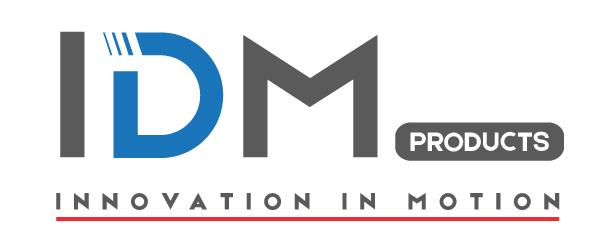The era of sustainability as an afterthought is over. Today’s executives and buyers face mounting pressure – from investors, consumers, and regulators alike – to embed environmental, social, and governance (ESG) factors deeply into their procurement decisions. It’s no longer about simply ticking boxes to meet regulations; it’s about unlocking strategic value alongside genuine positive impact.
Here’s where things get interesting: Procurement teams hold the key to driving organizational sustainability far beyond rudimentary compliance. Let’s look at some fresh, powerful strategies to achieve this.
1. From Linear to Circular: Rethinking the Supply Chain
A linear ‘take, make, dispose’ model fuels our consumption, but it’s a dead-end from a sustainability standpoint. Procurement must be a driving force in the transition to circular economies.
- Prioritize Recycled and Refurbished Materials: Can recycled inputs replace virgin materials without affecting quality? Could certain components be designed for easy repair or remanufacture?
- ‘Servitization’ Models: Instead of outright selling a product, consider leasing models with built-in maintenance, upgrades, and eventual take-back. This shifts suppliers’ incentives toward durability and longevity, reducing waste streams.
- Demand Transparency and Traceability: Map your supply chains meticulously to understand the origins of materials, working conditions, and potential environmental impacts at each stage.
- Design for Disassembly and Recycling: Collaborate with product designers to ensure that end-of-life scenarios are considered upfront, making disassembly and material recovery easier.
- Invest in Reverse Logistics: Develop systems to efficiently collect used products or components for reuse, repair, or remanufacturing.
2. The Power of Data: Measuring What Matters
Sustainability goals are meaningless without tracking your progress. But how do you go beyond basic emissions reporting?
- Get Granular with Your Scope: Break down your supply chain into tiers, understanding which activities generate the most impact. Don’t be afraid to look beyond your direct suppliers (Scope 1 & 2) and address major contributors within your upstream supply chain (Scope 3).
- Embrace Life Cycle Assessments (LCA): LCA tools calculate the total environmental footprint of a product or service. This allows you to make informed trade-offs, not just jump to the cheapest option with a hidden negative impact.
- Develop Sustainability Scorecards: Create custom scorecards that prioritize the factors most important to your company. Share these with potential suppliers to set clear expectations.
- Benchmark Against Industry Peers: Understand where your company stands in sustainability performance compared to your sector and seek collaborative ways to improve.
- Utilize Blockchain Technology: Explore how blockchain’s secure, transparent ledger can enhance traceability and trust in your sustainability data.
3. Collaboration is the New Black: Building Sustainable Ecosystems
The days of adversarial supplier relationships are numbered. For meaningful impact, collaborative innovation is vital.
- Treat suppliers as Partners: Share your sustainability roadmap and engage with suppliers who are proactive in finding solutions. Set targets together and explore co-investment options to develop more sustainable materials or processes.
- Join Industry Alliances: Collective action is often needed to tackle systemic issues like deforestation or labor exploitation. Industry bodies offer leverage, shared standards, and the power to influence entire sectors.
- Champion Supplier Diversity: Actively seek out suppliers owned and operated by women, minorities, or other underrepresented groups. This promotes inclusivity while potentially bringing fresh perspectives to your supply chain.
- Engage with NGOs and Experts: Partner with non-profits and research institutions focused on specific sustainability challenges relevant to your industry. Gain insights and collaborate on solutions.
- Incentivize Innovation: Establish supplier awards or innovation challenges specifically focused on sustainability to encourage breakthrough improvements.
The Ethical Imperative: Putting Social Impact at the Heart of Procurement
Don’t underestimate the ‘S’ in ESG. Sustainability demands a human-centered approach.
- Map Your Risks: Where are workers in your supply chain potentially vulnerable to modern slavery, poor labor conditions, or unfair wages? Prioritize these areas for stringent supplier audits.
- Embrace Diverse and Local Suppliers: This can contribute to economic empowerment for marginalized groups and reduce transportation emissions.
- Think Community: How can your procurement budget benefit the communities where you and your suppliers operate? Explore social enterprises and support local initiatives that align with your values.
- Demand Ethical Certifications & Audits: Look for independent certifications like Fairtrade, B Corp, or similar standards relevant to your industry when choosing suppliers.
- Support Supplier Capacity Building: Invest in training and development programs to help suppliers in less developed regions meet your sustainability standards.
- Champion Human Rights Due Diligence: Adopt rigorous processes to identify, address and prevent the risk of human rights violations across your supply chain.
The Sustainability Premium? Not Necessarily
Sustainable procurement, done right, can cut costs, enhance your brand, and future-proof your business.
- Focus on Total Cost of Ownership: Factor in the lifespan of a product, potential costs associated with waste disposal, or risks from future regulations when making decisions.
- Enhance Your Brand Reputation: Customers are increasingly willing to pay more for sustainably produced goods and services. Promote your sustainability story and avoid the reputational risks of unsustainable practices.
- Futureproof Your Business: Sustainability integration builds resilience against future regulations, supply chain disruptions, and resource scarcity.
- Attract Top Talent: Purpose-driven employees are drawn to companies with strong sustainability commitments.
- Access Sustainable Finance Opportunities: Green bonds and other sustainable financing options are increasingly available to businesses with proven ESG credentials.
A Call to Action
Procurement is no longer simply a cost center; it’s a strategic lever to build a more resilient, responsible, and ultimately, more profitable future. Sustainability executives and buyers who embrace this transformation have a competitive edge and the satisfaction of making a tangible difference in the world.

